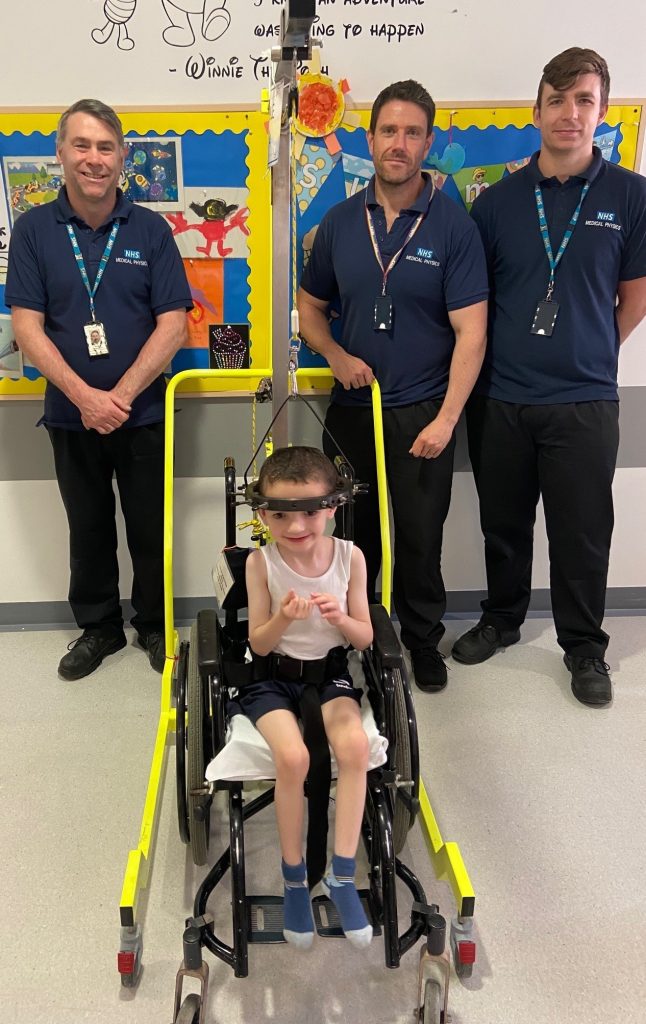
A team of medical device engineers from Newcastle Hospitals has designed and built a unique device which supports safer life-changing surgery in children with severe curvature of the spine (scoliosis).
The halo gravity traction device was designed at the request of spinal surgeon Mr Paul Rushton and occupational therapists at Newcastle’s RVI.
Untreated severe scoliosis in very young children limits lung development and can increase the risk of premature death. Treatment involves controlling the deformity and allowing continued spinal growth to ensure the lungs can grow.
The aim of traction is to gradually straighten the spine as much as possible before surgery, helping limit the invasiveness of the initial operation and reducing the risk of any neurological or lung problems.
Halo-gravity traction is only used for the most severe of spinal deformities so ‘off the shelf’ options are not available. The treatment is used quite commonly in North America but in few centres in the UK.
The bespoke device was designed, tested and manufactured in just under six months by the Newcastle Hospitals medical physics and clinical engineering team.
Benefits and improvements on what is currently limitedly available are:
- The device is interchangeable between the patient’s wheelchair and walking frame, allowing much needed physiotherapy.
- Traction loads are administered via a ‘sliding carriage’, meaning the weights used to straighten the spine travel with the patient when they move their head, applying a constant force in a safe manner.
Commenting on the success of the halo device, Mr Rushton said:
“Severe scoliosis in this age group is very challenging to treat.
“Traction has been shown to be successful in selected patients, however, takes around four to six weeks to have an effect.
“It’s clearly not healthy for patients, especially children, to be kept in bed for that length of time; it is detrimental physically, potentially leading to respiratory problems and muscle wastage, in addition to the mental challenges
“This fantastic device works very effectively allowing traction to be applied whilst patients mobilise in a walker or a wheelchair.
“We have a four-year-old patient called Kyle who has been having the treatment for a few weeks now and we’re seeing great results – he’s coping really well, is up and about and there’s been a big improvement in spinal shape already.
“All the staff on the ward have been phenomenal in helping him manage this difficult treatment.”
Kyle’s mum Kerry Brookes, added: “Seeing Kyle with this new device has been a dream come true. He gets anxious when he is in traction on the bed but as soon as he can get up and move around he’s so happy and smiley. I was worried about it at first, but despite the nerves it has been amazing. I would recommend it to other families in our position. I can’t thank the team enough.”
Stuart Duffy, head of the regional technical aid service at Newcastle Hospitals, said:
“The team love working on new challenges and improving patient care or making it easier for clinical colleagues to enhance what they can do is the most important part of our job.
“Kyle’s stay in hospital will be a long one, so it’s great to see how the new device is allowing him some freedom from his hospital bed, playing massive part in his mental well-being and that of his family.
“It’s very rewarding to be involved in something so life-changing for young patients.”